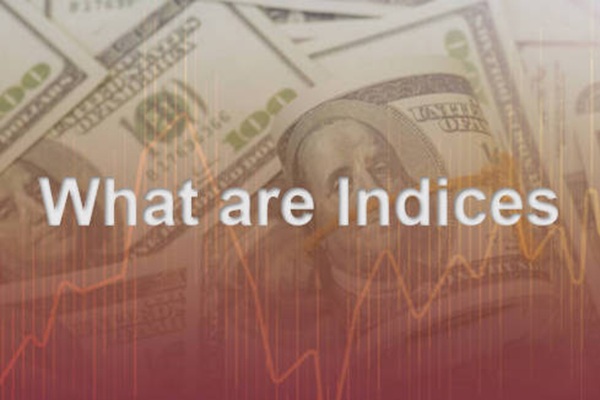While the pair's move above the 155 mark underscores growing pressure on the yen, the interplay of Japan's fiscal policy, monetary‑policy expectations and U.S. data releases suggests a more complex trajectory ahead for USD/JPY.
Drivers of the USD/JPY Move

1. Japanese Fiscal Expansion and Yen Pressure
Prime Minister Takaichi's government is finalising an economic package exceeding 17 trillion yen to support households and drive growth.[1]
The scale of the stimulus has raised concerns over fiscal sustainability, especially as bond yields rise, increasing risk premiums on Japanese debt.[2]
Markets see this as consistent with "Abenomics‑style" policies: aggressive fiscal spending combined with a very patient central bank.
2. Monetary Policy Divergence: BoJ vs. the Fed
The Bank of Japan's path to rate increases remains cautious, even as fiscal stimulus intensifies, which may further delay tighter monetary policy.[3]
In contrast, the US Federal Reserve has seen its rate‑cut expectations reduced, supporting a stronger dollar.
The widening yield gap between US Treasuries and Japanese Government Bonds is encouraging carry flows into USD/JPY.
3. Intervention Risks and Regulatory Monitoring
Japan's Finance Minister Satsuki Katayama has publicly stressed vigilance over "one‑sided and rapid" currency moves.
Despite the weakening yen, major banks such as Goldman Sachs and BofA assert that conditions for outright intervention (the so‑called "nuclear button") are not yet satisfied.
According to analysts, significant intervention risk would likely emerge only if USD/JPY rises further to the 161–162 yen area.
USD/JPY Technical Outlook: Key Levels and Scenarios
| Zone |
Interpretation |
Key Levels |
| Support |
Areas where downward pressure may moderate |
~153.50–153.00 (reflecting prior consolidation) |
| Resistance / Intervention Zone |
Levels where intervention risk could increase |
~155.00–160.00, with attention around 161–162 |
| Bullish Momentum Target |
If USD/JPY sustains strength |
158–160+ (if stimulus surprises and dollar remains strong) |
| Bearish Reversal |
If market reverses or intervention intensifies |
Below 153.00, potentially toward 151–152 if selling pressure mounts |
Analysts note that USD/JPY has entered what they call the "intervention zone" of 155–160. driven by policy uncertainty from the BoJ and strong US inflation signals.
Macro Fundamentals: Strengths and Risks

1. Current Account Strength
Japan recorded a record current‑account surplus in September of JPY 4.483 billion, driven by foreign direct investment income.
This surplus provides some underlying external strength, but the capital flow dynamics are more complex in the context of currency depreciation.
2. Inflation Dynamics
Inflation in Tokyo remains sticky; this complicates the BoJ’s task of balancing its growth objectives with the need for monetary credibility.
Wage growth remains a critical variable. The BoJ has emphasised that future rate moves depend on sustainable wage gains.
3. Political & External Pressure
U.S. Treasury Secretary Scott Bessent has urged Japan to give the BoJ more flexibility to raise interest rates, warning that a persistently weak yen could contribute to currency volatility.
The political risk is concentrated around whether Tokyo will allow monetary normalisation or remain committed to fiscal stimulus, which could fuel further yen weakness.
Forecast Scenarios for USD/JPY
| Scenario |
Description |
Possible USD/JPY Range |
| Base Case |
Stimulus goes ahead, BoJ remains dovish, dollar stays firm |
155.00–158.00 |
| Upside Case |
Larger‑than-expected fiscal package; stronger dollar flow |
158.00–160.00+, with potential test of intervention zone |
| Reversal Case |
Intervention or BoJ shift toward hawkishness |
Drop toward 152.00–153.00, possibly lower if intervention intensifies |
Market Implications of USD/JPY Movements

For Traders:
Elevated volatility is likely.
Traders should watch for intervention signals, especially if USD/JPY approaches 160. and monitor U.S. inflation data, which could influence Fed expectations.
For Corporates:
Japanese importers face higher costs as the yen weakens, potentially squeezing margins.
Exporters may benefit from a competitive currency but must also consider hedging risk.
For Policymakers:
The tension between fiscal expansion and monetary discipline poses a test for credibility.
How Japan navigates exchange rate risk could influence future policy decisions.
Frequently Asked Questions (FAQ)
Q1: Why is USD/JPY rising so sharply now?
Markets are pricing in a large fiscal stimulus under PM Takaichi, weaker yen outlook, and a stronger US dollar, driven by diverging monetary policy between Japan and the US.
Q2: Is there a risk of Japan intervening in the FX market?
Yes. While major banks say intervention risk is not immediate, authorities are closely monitoring the move. If USD/JPY approaches the 161–162 yen area, risk may rise substantially.
Q3: How does Japan's current account surplus affect the yen?
Japan's record surplus (driven by investment income) provides external strength, but it has not prevented yen depreciation, as carry flows and fiscal concerns dominate.
Q4: What could trigger a reversal in USD/JPY?
A sustained intervention, a hawkish pivot from the BoJ, or a sharp drop in US inflation or interest rate expectations could push USD/JPY lower.
Q5: What should forex traders watch going forward?
Traders should monitor Japan's stimulus package details, BoJ statements on rates, US inflation and employment data, and any signs of official currency intervention.
Conclusion
The USD/JPY pair is navigating a complex policy and macroeconomic backdrop. Japan's proposed multi‑trillion-yen stimulus is weighing heavily on the yen, even as the Bank of Japan remains cautious on rate hikes. Meanwhile, continued strength in the US dollar and widening monetary divergence support further upside in this pair.
That said, intervention risk is real. While immediate action may not be inevitable, the Japanese government has reiterated that it is closely watching currency moves. For market participants, the coming weeks will be crucial: the scale of stimulus, upcoming U.S. economic data, and central bank guidance will all be key in determining the path for USD/JPY.
Sources:
[1]https://www.reuters.com/world/asia-pacific/japans-finance-minister-says-stimulus-package-exceed-110-billion-nikkei-reports-2025-11-16/
[2]https://cn.investing.com/news/stock-market-news/article-3060710
[3]https://www.tradingnews.com/news/usd-jpy-price-forecast-yen-holds-near-154-japnas-massive-92b-usd
Disclaimer: This material is for general information purposes only and is not intended as (and should not be considered to be) financial, investment or other advice on which reliance should be placed. No opinion given in the material constitutes a recommendation by EBC or the author that any particular investment, security, transaction or investment strategy is suitable for any specific person.
























